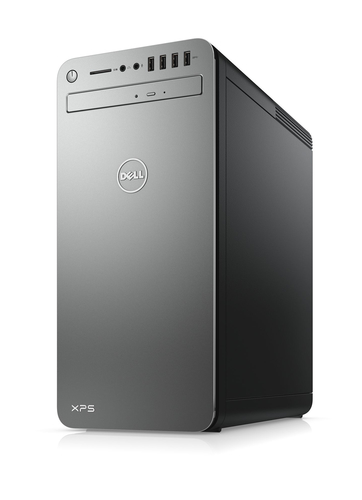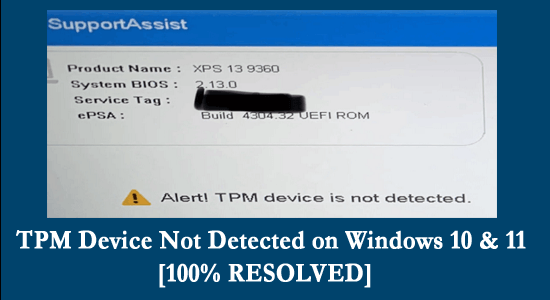

- #DELL XPS 8920 TRUSTED PLATFORM MODULE DRIVER UPGRADE#
- #DELL XPS 8920 TRUSTED PLATFORM MODULE DRIVER WINDOWS 10#
- #DELL XPS 8920 TRUSTED PLATFORM MODULE DRIVER CODE#
- #DELL XPS 8920 TRUSTED PLATFORM MODULE DRIVER WINDOWS#
If nothing else, I will try to format the disk, to see if it is usable.
#DELL XPS 8920 TRUSTED PLATFORM MODULE DRIVER WINDOWS#
Maybe the Windows system files did not get properly recorded. I figure that eitherī) something went afoul during the cloning operation. Tomorrow (3 July), when my nerves calm down, I will Disable Optane, disconnect both of my internal HDDs, and try the new 'boot' disk by itself. (The actress on my desktop wallpaper never looked so good!) The system did boot into Windows 10, although dog-slow without the help from Optane, and my "D" drive came back.

By now I was freaking out.Īfter a few hours of pulling my hair out (about 4 am), I removed the new "boot' drive and re-installed my OEM boot drive (Seagate ST1000DM010, 1TB). I also discovered that the system no longer recognized my original "D" drive. I went into DOS (Command Prompt) from the Recovery DVD and verified that drive "C" actually had files on it.
#DELL XPS 8920 TRUSTED PLATFORM MODULE DRIVER WINDOWS 10#
I booted into the Windows 10 Recovery DVD and tried to "Repair Files that keep Windows from starting" (or whatever it is called). I assumed that was because both drives were labeled "C".Īfter I shut down, swapped the drives, and re-installed my "D" drive, the system still froze before showing the Lock Screen image. The system hung before the Windows Lock Screen image showed. I wanted to check the new disk before swapping the drives. When the program finished, I let it reboot the system, rather than shut it down. The cloning operation did reboot into DOS (the Seagate GUI) and did its job. I tried to use the Seagate Recovery Boot disk, but the program could not Lock drive C, so I booted into Windows 10 and used that version of DiskWizard. I first disabled Optane, then removed my current "D" drive (ST2000DM008, 2TB) and installed the new HDD in its place. The 'new' HDD (Seagate ST2000DM008, 2TB) that I ordered from Amazon was actually a "Recertified Product" (translation: "Used"). Wherever there i a 'foolproof' system, there is some fool who will prove it. * This 'should' prevent users from FUBARing their systems. Primarily boots into Windows 7) already has the 'free' copy of Windows 10 on the second internal hard drive, but I almost never boot into that hard drive (changed through BIOS).

My other computer (Dell Insipron 530, circa 2009.
#DELL XPS 8920 TRUSTED PLATFORM MODULE DRIVER CODE#
"And, if you intend on cloning a system drive to put into some other machine, do not do that."įrom what I have read, Windows 10 has some code that ties it to the motherboard, to keep people from installing illegal copies of Windows. If nothing else, I will have a secure, off-computer backup of my boot drive (on the 1TB OEM drive). I am leery about Windows 11, but I at least want to see it, without messing up my current system, and without that ridiculous ten day Windows 11 test period.
#DELL XPS 8920 TRUSTED PLATFORM MODULE DRIVER UPGRADE#
This is the machine where I want to upgrade the boot drive. All I did was to plug in the cables for the new drive. How Drive 0 became "D" and Drive 1 became "C" (boot drive) is a bit of a mystery. I installed the second internal drive before my first boot. Note: My Dell XPS 8920 come with the Intel Optane Memory already enabled. It appears to have the capability of resizing partitions during the clone. I will be using Seagate DiscWizard to perform the cloning operation. If possible, I would like to know what is in those partitions. The 1.12GB partition (end of the drive?) must be the Intel area, but why so big? The 12.9Gb partition must be the Windows Recovery area. Some of that information is on the HDD (to which users have no access*). If I am all wet about the clone/swap procedure, please give step-by-step instructions.Īpparently the system information is on the Optane SSD (to which users have no access*). The Intel Optane Memory Module 'appears' to be version M.2, but I could be wrong. In the image above, the "SATA (932 GB)" is the current boot 1TB HDD drive. If the system will reboot from the cloned 2TB replacement, will the "Rescan" process pick up the data for the new boot drive?

Do I need to disable Optane Memory before swapping the drives, or will the system recognize the cloned (2TB) boot drive after the swap?Ģ. (I will temporarily remove the current 2TB "D" drive.)Īssuming that I clone the boot drive while Optane Memory is enabled:ġ. I want to replace the 1TB HDD OEM drive with a new 2TB HDD drive, after I clone the OEM drive. I also have a second internal drive, 2TB HDD. I have a Dell XPS 8920 (circa 2017) with the Dell OEM 1TB HDD as boot drive (Drive C), and with Optane Memory enabled ("paired" to the boot drive).


 0 kommentar(er)
0 kommentar(er)
